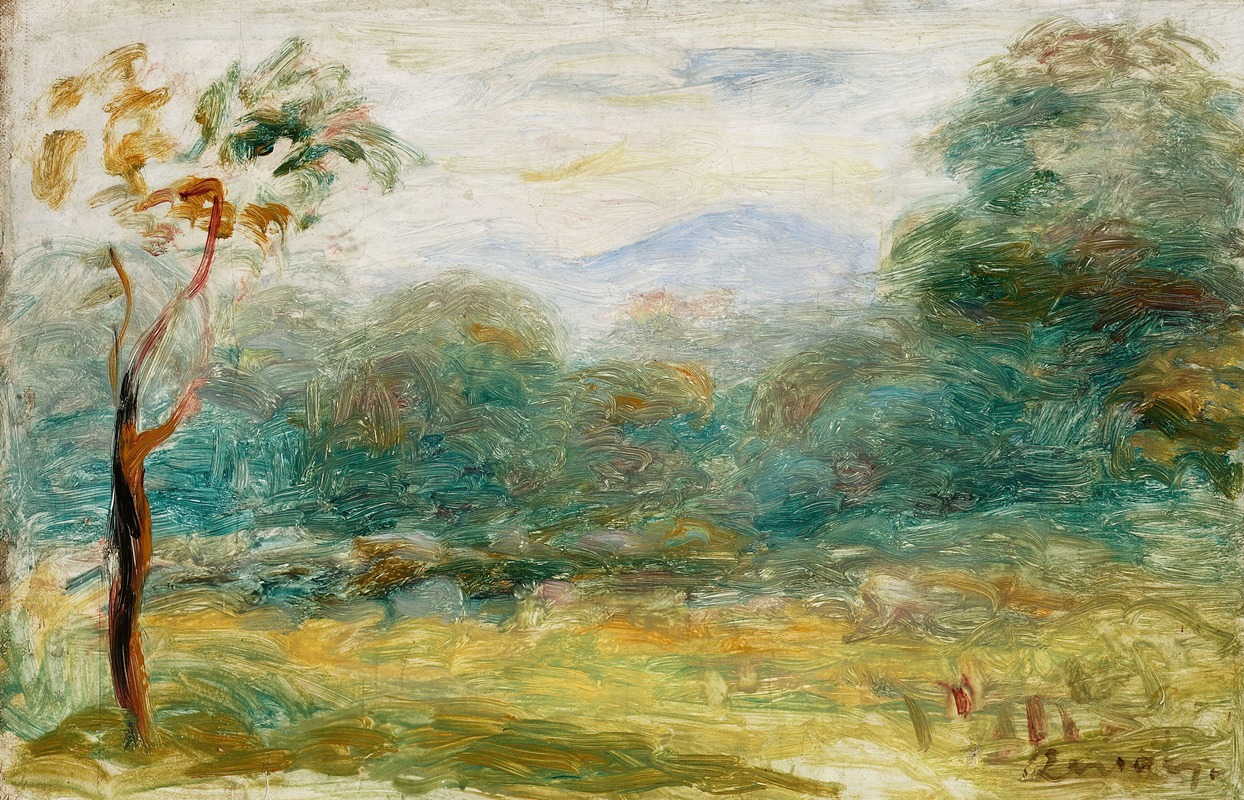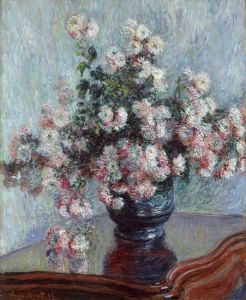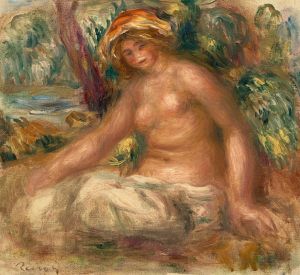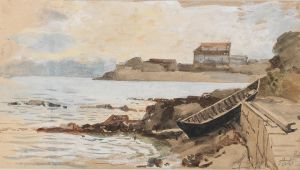
Landscape from the south of France
A hand-painted replica of Pierre-Auguste Renoir’s masterpiece Landscape from the south of France, meticulously crafted by professional artists to capture the true essence of the original. Each piece is created with museum-quality canvas and rare mineral pigments, carefully painted by experienced artists with delicate brushstrokes and rich, layered colors to perfectly recreate the texture of the original artwork. Unlike machine-printed reproductions, this hand-painted version brings the painting to life, infused with the artist’s emotions and skill in every stroke. Whether for personal collection or home decoration, it instantly elevates the artistic atmosphere of any space.
Pierre-Auguste Renoir's Landscape from the South of France is a painting created by the renowned French Impressionist artist, celebrated for his vibrant use of color and light. Renoir, a central figure in the Impressionist movement, is known for his depictions of landscapes, portraits, and scenes of everyday life. This particular work reflects his deep appreciation for the natural beauty of southern France, a region he frequently visited and where he eventually settled in his later years.
The painting captures the essence of the southern French countryside, characterized by its warm, sunlit atmosphere and lush vegetation. Renoir's technique in this work exemplifies his mastery of Impressionist principles, including loose brushwork and a focus on the interplay of light and color. The composition likely features elements typical of the region, such as olive trees, rolling hills, or Mediterranean flora, though specific details of the scene are not universally documented.
Renoir's connection to southern France was both personal and artistic. In the 1880s, he began traveling to the region, drawn by its mild climate and picturesque landscapes. These visits influenced his artistic style, as he sought to capture the unique qualities of the Mediterranean light and the vibrant colors of the environment. Later in life, Renoir moved to the village of Cagnes-sur-Mer, where he continued to paint prolifically despite suffering from rheumatoid arthritis.
While Landscape from the South of France is not among Renoir's most widely recognized works, it is representative of his broader body of landscape paintings, which often convey a sense of tranquility and harmony with nature. Renoir's landscapes were not intended to be exact representations of specific locations but rather evocative portrayals of the mood and atmosphere of a place.
The painting is an example of Renoir's enduring fascination with the beauty of the natural world and his ability to translate that beauty onto canvas. It serves as a testament to his skill as a colorist and his dedication to capturing the fleeting effects of light and atmosphere, hallmarks of the Impressionist movement.
Further details about the painting's current location, provenance, or exact date of creation are not readily available in public records.


















